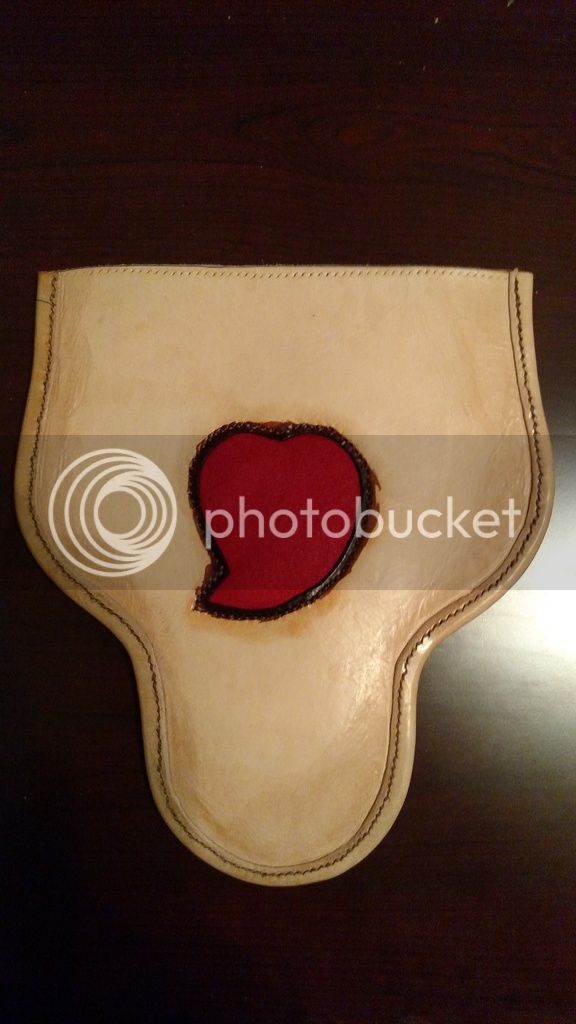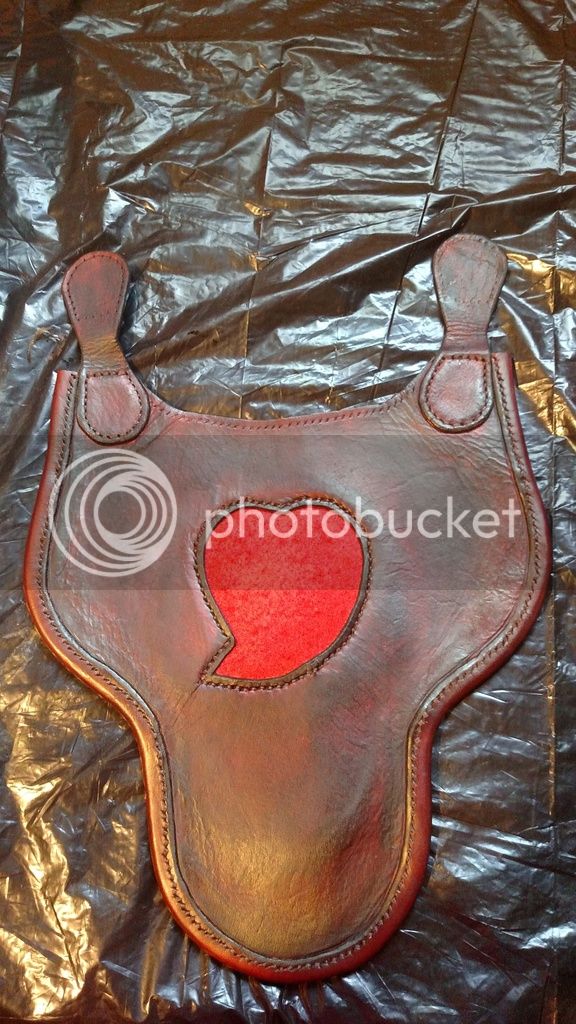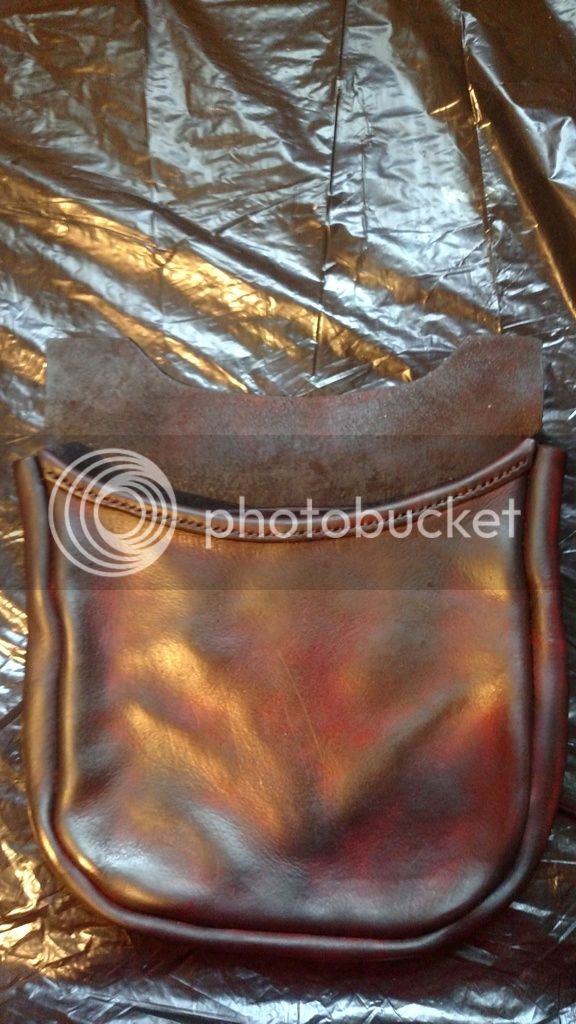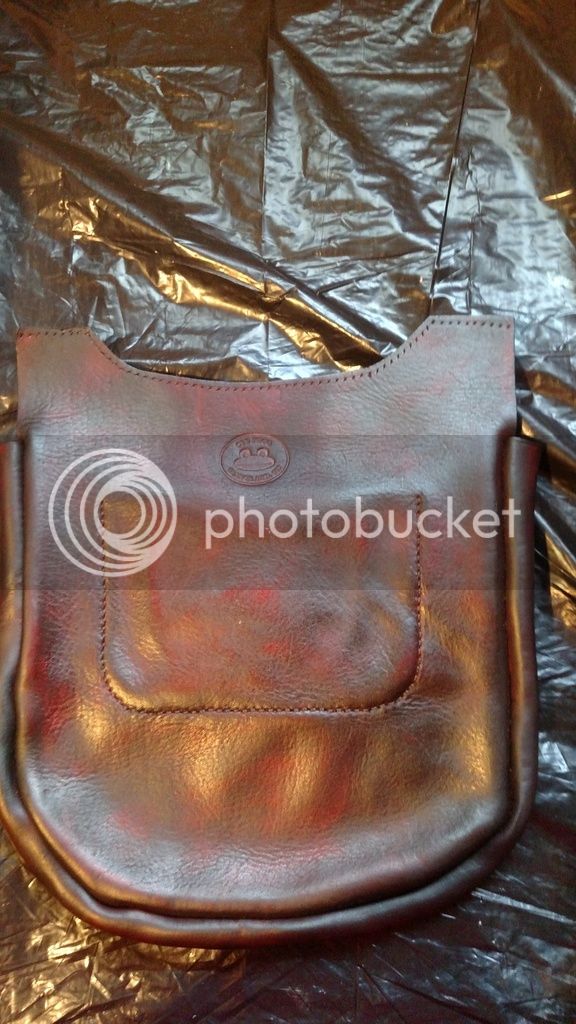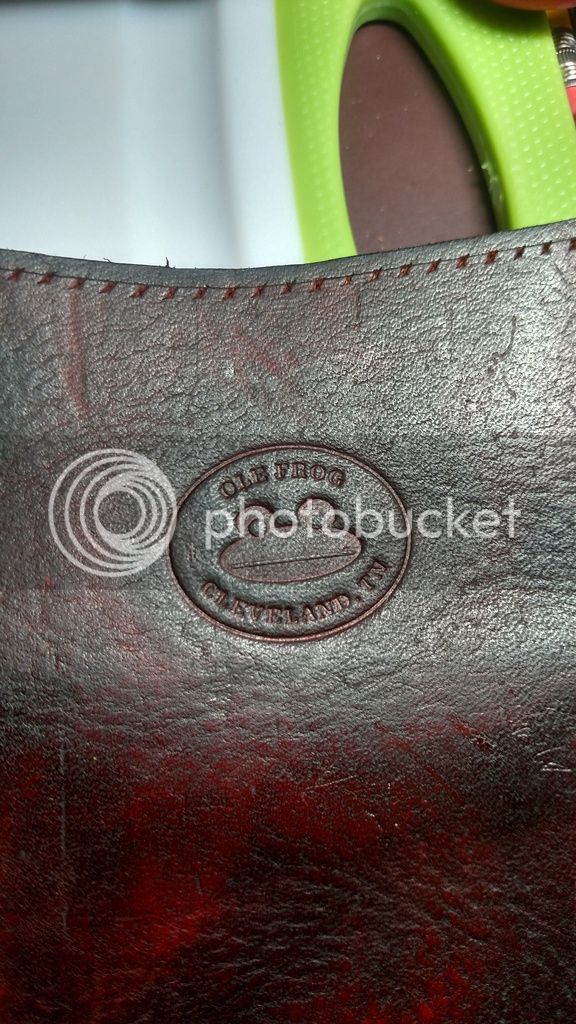Ole Frog
40 Cal.
- Joined
- Mar 25, 2013
- Messages
- 156
- Reaction score
- 10
I need some help to figure out where I am going with a bag I want to make
I have made simple bags and I use 3-4 oz leather
I would like to make a bag with the red heart in the front of it. The book "Recreating the 18th Century Hunting Pouch" uses leather front & back
1.) If I use leather front and back of the heart, that will be 6-8 oz of leather
Wont that be too thick?
2.) What do you guys use when you add an outside seam around the flap?
isn't 3-4 oz too thick to double over?
How do you guys do it?
John
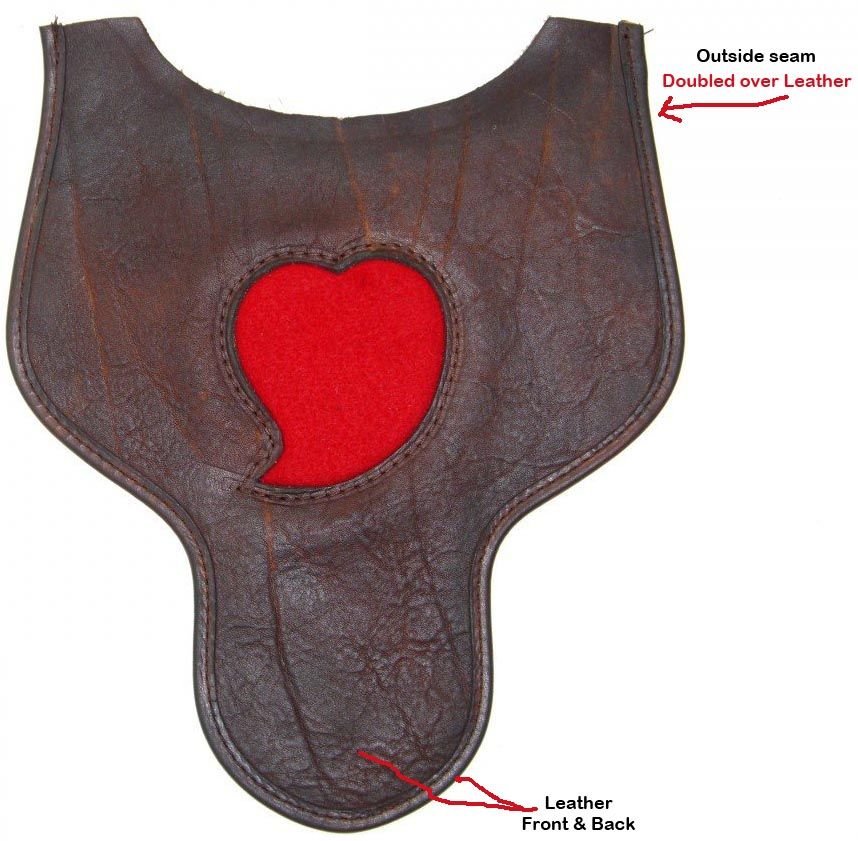
I have made simple bags and I use 3-4 oz leather
I would like to make a bag with the red heart in the front of it. The book "Recreating the 18th Century Hunting Pouch" uses leather front & back
1.) If I use leather front and back of the heart, that will be 6-8 oz of leather
Wont that be too thick?
2.) What do you guys use when you add an outside seam around the flap?
isn't 3-4 oz too thick to double over?
How do you guys do it?
John





